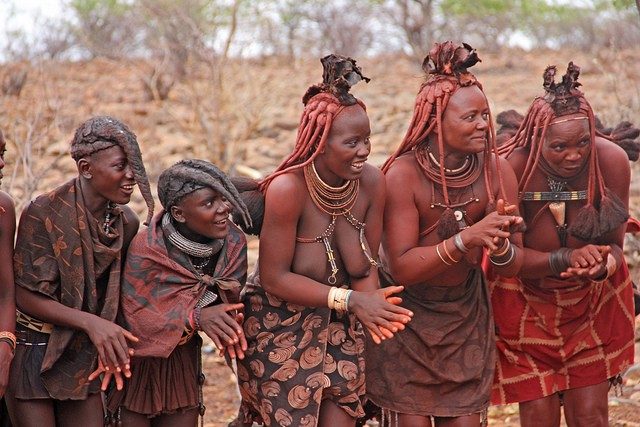The character ‘Binti’ in Nnedi Okorafor’s trilogy of novellas was inspired by the interesting Himba tribe.
The semi-nomadic Ovahimba and Ovazimba tribes are found in the Kunene and Omusati regions of Northern Namibia, and they have distinctive rituals.
Daily activities such as caring for children and milking cows are usually handled by women, while males hunt, sometimes for long periods of time.
The Himba people, who number more than fifty thousand, engage in polygamy, whereby girls marry men selected by their fathers when they reach puberty.
Many components of their society have not changed despite Western influences, such as the custom of giving men priority when making decisions.
One common custom is the “Man comes first” philosophy, according to which wives frequently respect their husbands’ decisions.
It’s interesting to note that when a guest arrives, a gesture of hospitality is for the husband to offer his wife to them for the night while he stays somewhere else to sleep. By doing this, the hope is to lessen jealousy and strengthen the ties between visitors and hosts.
The Himba people also have a long-standing custom of avoiding bathing. Women cover their skin with scented resins and take smoke baths in place of regular baths. They believe that the color red represents “Earth and blood,” a crucial symbol in their society.
They are distinguished by their unique red skin tone, which is the result of applying otjize paste, a mixture of butterfat, ochre, and omuzumba scrub. Their skin is protected by this mixture from bug bites and the intense desert sun.
Himba’s Influence on African Literature
In Nnedi Okorafor’s “Binti,” the protagonist ‘Binti,’ is descended from the Himba tribe, despite the Himba being underrepresented in literature. They are a Namibian tribe that Okorafor says is well-known for employing “sweet-smelling
In Nnedi Okorafor’s “Binti,” the protagonist ‘Binti,’ is descended from the Himba tribe, despite the Himba being underrepresented in literature.
According to Okorafor, they are a tribe from Namibia that is well-known for applying “sweet-smelling otjize,” a concoction of ochre and butterfat, to their hair and skin as a means of defense against the desert sun.
The novella’s depiction of the Himba deviates slightly from truth since, unlike the real-life nomadic Himba people, the fictional Himba do not travel.







